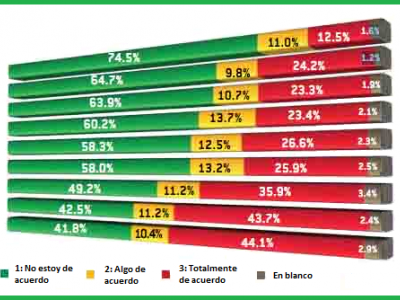Zoom Conversations vs In-Person: Brain Activity Tells a Different Tale
Zoom Conversations vs In-Person: Brain Activity Tells a Different Tale

The research suggests online faces, with present technology, don’t engage our social neural circuits as effectively.
- The study employed unique neuroimaging technologies to monitor real-time brain activity during two-person interactions both in-person and on Zoom.
- In-person interactions exhibited increased neural activity linked with gaze time, pupil dilation, and enhanced face processing ability, reflecting greater arousal and social cue exchange.
- Current digital representations of faces don’t access the brain’s social neural pathways as effectively as live interactions.
When Yale neuroscientist Joy Hirsch used sophisticated imaging tools to track in real time the brain activity of two people engaged in conversation, she discovered an intricate choreography of neural activity in areas of the brain that govern social interactions.
When she performed similar experiments with two people talking on Zoom, the ubiquitous video conferencing platform, she observed a much different neurological landscape.
Neural signaling during online exchanges was substantially suppressed compared to activity observed in those having face-to-face conversations, researchers found.
“In this study we find that the social systems of the human brain are more active during real live in-person encounters than on Zoom,” said Hirsch, the Elizabeth Mears and House Jameson Professor of Psychiatry, professor of comparative medicine and neuroscience, and senior author of the study.
“Zoom appears to be an impoverished social communication system relative to in-person conditions.”
Social interactions are the cornerstone of all human societies, and our brains are finely tuned to process dynamic facial cues (a primary source of social information) during real in-person encounters, researchers say.
While most previous research using imaging tools to track brain activity during these interactions has involved single individuals, Hirsch’s lab developed a unique suite of neuroimaging technologies that allows them to study, in real time, interactions between two people in natural settings.
For the new study, Hirsch’s team recorded the neural system responses in individuals engaged in live, two-person interactions, and in those involved in two-person conversations on Zoom, the popular video conferencing platformed now used by millions of Americans daily.
They found that the strength of neural signaling was dramatically reduced on Zoom relative to “in-person” conversations. Increased activity among those participating in face-to-face conversations were associated with increased gaze time and increased pupil diameters, suggestive of increased arousal in the two brains. Increased EEG activity during in-person interactions was characteristic of enhanced face processing ability, researchers said.
In addition, the researchers found more coordinated neural activity between the brains of individuals conversing in person, which suggests an increase in reciprocal exchanges of social cues between the interacting partners.
Social interactions are the cornerstone of all human societies, and our brains are finely tuned to process dynamic facial cues (a primary source of social information) during real in-person encounters, researchers say. Credit: Neuroscience News
“Overall, the dynamic and natural social interactions that occur spontaneously during in-person interactions appear to be less apparent or absent during Zoom encounters,” Hirsch said. “This is a really robust effect.”
These findings illustrate how important live, face-to-face interactions are to our natural social behaviors, Hirsch said.
“Online representations of faces, at least with current technology, do not have the same ‘privileged access’ to social neural circuitry in the brain that is typical of the real thing,” she said.








